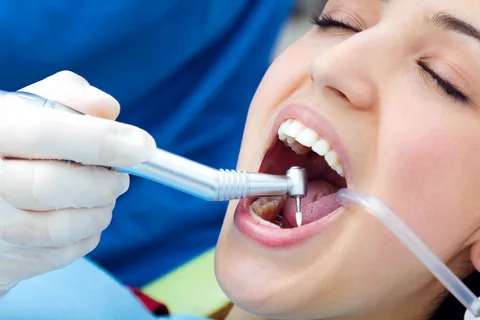In the realm of sleep disorders, sleep apnea takes center stage as one of the most prevalent and potentially serious conditions. Characterized by interrupted breathing during sleep, this disorder can significantly impact overall health and well-being. This article aims to shed light on the basics of sleep apnea and unravel nine key signs that may indicate its presence. Let’s embark on a journey to better understand sleep apnea and recognize the subtle clues that often go unnoticed.
Understanding Sleep Apnea
Sleep Apnea Defined:
Sleep apnea is a sleep disorder characterized by repetitive pauses in breathing during sleep. These interruptions, known as apneas, can last for a few seconds to minutes and may occur multiple times throughout the night.
Types of Sleep Apnea:
- Obstructive Sleep Apnea (OSA): The most common form, OSA occurs when the muscles in the throat relax excessively, leading to a blockage of the airway.
- Central Sleep Apnea: Less common, this type results from a failure of the brain to send the appropriate signals to the muscles responsible for breathing.
- Complex/Mixed Sleep Apnea: A combination of both obstructive and central sleep apnea.
Now that we have a basic understanding of sleep apnea, let’s explore the nine signs that may indicate the presence of this sleep disorder.
1. Loud Snoring
Description:
Loud and persistent snoring is a hallmark sign of obstructive sleep apnea. The sound is a result of air squeezing past the blockage in the throat.
Explanation:
As the airway becomes partially blocked, the airflow causes surrounding tissues to vibrate, producing the characteristic snoring sound.
Impact:
While not everyone who snores has sleep apnea, loud and chronic snoring should not be ignored, especially if accompanied by other symptoms.
2. Pauses in Breathing
Description:
Witnessed pauses in breathing during sleep, often reported by a bed partner.
Explanation:
These pauses are indicative of apneas, where breathing is momentarily halted. The individual may seem to “catch their breath” with a snort or gasp.
Impact:
Frequent pauses in breathing disrupt the normal sleep cycle, leading to fragmented and poor-quality sleep.
3. Excessive Daytime Sleepiness
Description:
Unexplained and persistent daytime sleepiness, regardless of the amount of time spent in bed.
Explanation:
Frequent awakenings due to apneas can prevent individuals with sleep apnea from reaching restorative stages of sleep, leading to excessive daytime fatigue.
Impact:
Daytime sleepiness can impair cognitive function, concentration, and overall quality of life.
4. Morning Headaches
Description:
Frequent headaches upon waking, often located around the forehead and temples.
Explanation:
The oxygen deprivation caused by apneas can lead to nighttime headaches, impacting overall sleep quality.
Impact:
Morning headaches can contribute to discomfort and reduced well-being, affecting daily activities.
5. Difficulty Concentrating
Description:
Impaired focus, attention, and memory during waking hours.
Explanation:
Sleep disruptions from untreated sleep apnea can result in cognitive deficits and difficulty concentrating.
Impact:
Reduced cognitive function can impact work performance, academic achievement, and overall quality of life.
6. Irritability and Mood Changes
Description:
Increased irritability, mood swings, and heightened emotional responses.
Explanation:
Sleep apnea-related sleep disturbances can contribute to changes in mood, including irritability and emotional sensitivity.
Impact:
Mood changes can strain relationships and impact overall mental well-being.
7. Frequent Nighttime Urination
Description:
Increased need to urinate during the night (nocturia).
Explanation:
Sleep apnea may contribute to the release of a hormone that affects fluid balance, leading to increased urine production.
Impact:
Frequent nighttime awakenings for bathroom trips can further disrupt sleep.
8. Gasping or Choking Sensation
Description:
Awakening with a sudden gasping or choking sensation.
Explanation:
As the airway becomes obstructed, the body may respond with a sudden, involuntary effort to restore airflow.
Impact:
These episodes can cause further sleep disruptions and anxiety.
9. Insomnia or Difficulty Falling Asleep
Description:
Difficulty initiating sleep or maintaining continuous sleep throughout the night.
Explanation:
Sleep apnea-related disruptions can contribute to difficulty falling and staying asleep.
Impact:
Insomnia can exacerbate daytime sleepiness and fatigue, creating a cycle of sleep disturbances.
Navigating Solutions: Sleep Apnea Mouthpiece in Los Gatos
Introduction:
For those experiencing the signs mentioned above, seeking professional guidance is crucial for an accurate diagnosis and appropriate treatment. One potential solution is the use of a sleep apnea mouthpiece, particularly in the Los Gatos area.
Role of a Sleep Apnea Mouthpiece:
A sleep apnea mouthpiece, also known as a mandibular advancement device (MAD), is a custom-fitted oral appliance designed to reposition the jaw and tongue to keep the airway open during sleep.
Benefits of a Sleep Apnea Mouthpiece:
- Improved Airflow: By preventing airway collapse, the mouthpiece promotes uninterrupted breathing.
- Reduced Snoring: Many individuals find a significant reduction in snoring with the use of a sleep apnea mouthpiece.
- Enhanced Sleep Quality: Continuous and uninterrupted sleep can lead to improved overall sleep quality.
Conclusion:
If you or a loved one recognizes these signs, it’s essential to consult with a healthcare professional for a comprehensive evaluation. Early detection and management of sleep apnea can significantly improve overall well-being and quality of life.
In conclusion, understanding the signs of sleep apnea is a crucial step toward prioritizing sleep health. With the right awareness, intervention, and potentially the use of a sleep apnea mouthpiece in Los Gatos, individuals can embark on a journey toward restful and restorative sleep.
By familiarizing ourselves with the signs of sleep apnea and embracing solutions tailored to individual needs, we can pave the way for a healthier, more rejuvenating sleep experience. Remember, seeking professional guidance is the first step towards unlocking the path to better sleep and overall well-being.
For personalized guidance and expert care, book your appointment now! Let’s work together to ensure you enjoy the sleep you deserve.


